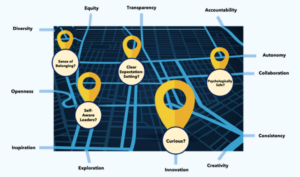
How to Grow the Soft Skills Your Team Needs to Collaborate
Building rapport, goodwill, and respect among all team members is essential for the best collaborative sessions. How do you do that? “Transparency, openness, and a

Building rapport, goodwill, and respect among all team members is essential for the best collaborative sessions. How do you do that? “Transparency, openness, and a

In 2024, organizations began to see the benefits of a workforce choosing stability over movement. This era, dubbed “The Great Stay,” saw fewer employees voluntarily

Employee retention is a top priority for businesses, with one 2024 report noting that 64% of businesses say hiring and retention is their number one

Sponsored by Firstup. We’ve all encountered employee onboarding nightmares. Perhaps your manager forgot your start date. Or maybe the tools and technology assigned to you didn’t

In a world where great talent is hard to find, emphasizing employee self-care and work-life balance gives employers a serious competitive advantage. Fostering a culture

Employee recognition is a must for any organization. But if you’re looking for a one-and-done kind of formula, you’ll probably want to think again. That’s

Sponsored by Firstup For years, Gallup has tracked global employee engagement. Although the trend line has improved somewhat over the past decade, still only 23% of

As artificial intelligence continues to spread across the business landscape, it is transforming work in countless ways. For example, thanks to AI, we’re entering a

Think about the most successful companies you know. More likely than not, they’re built on the strength of frontline employees, working collaboratively toward shared goals

As organizations move beyond the pandemic, workforce development is changing in fundamental ways. For example, wellbeing has emerged as a top workforce priority, and this

It’s a universal leadership challenge. In this new work-from-wherever world, how can we get the most from hybrid and remote teams? Will we find answers

Does your organization observe Employee Appreciation Day? Once a year on the first Friday in March, many employers take time to celebrate the commitment and

As 2024 begins, employers are eager to move beyond “The Great Resignation” of 2022 and last year’s subsequent “Great Gloom.” But what exactly are organizations

Sponsored by Workleap Officevibe In most organizations, the human resources team is a primary point of contact throughout the employee journey. From the very first

We’re facing turbulent times in the world of work. And not surprisingly, the language we use to describe modern work life is changing just as

Productivity metrics were essential 100 years ago, during the manufacturing age. At that time, organizations measured success with metrics like hours worked, revenue per employee,

If you subscribe to our twice-monthly TalentCulture newsletter, or you follow us on social media, you probably know we often publish original articles by business

There’s nothing like having skin in the game to keep you focused, motivated, and engaged. Just ask any business owner. This logic extends to employees,

Driven by an ever-growing desire for personalized, convenient, seamlessly integrated experiences, customer expectations continue to evolve at breakneck speed. To meet these expectations, organizations must

People often assume happy employees are also engaged. But is that really a safe bet? Sometimes with the best intentions to improve happiness in the

Sponsored by The Culture Platform What makes maps so special is they tell you exactly where to find places you want to visit. Wouldn’t it

Currently, about 40% of people in the U.S. workforce are parents whose kids are under 18 years old. With soaring childcare costs and limited government

Anyone who says being a leader is easy is simply not being honest. Leadership is hard. Yes, I said it. And that shouldn’t shock anyone.

In recent years, employee experience has taken center stage as a primary indicator of organizational success. As a result, HR and business leaders increasingly want to

As artificial intelligence becomes more deeply embedded in everyday workflows, it is rapidly transforming the way businesses operate. For example, the recent rise of generative